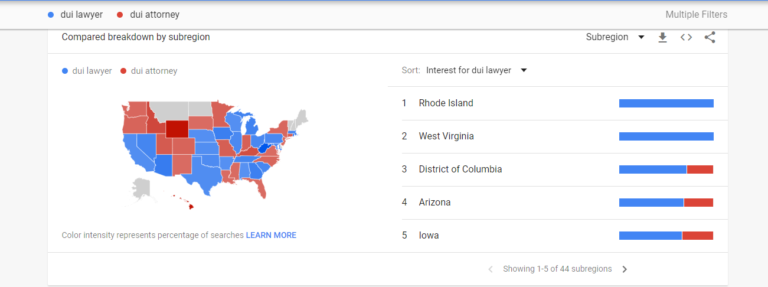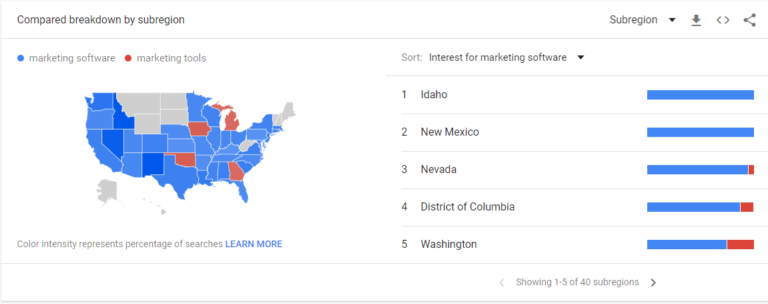Launching a new campaign is exciting! It could mean testing a new platform, strategy, or market.
With that said, new campaigns are expensive.
They can be temperamental as they overcome learning periods.
Sometimes account managers will invest heavily, in the beginning, to bypass the learning period, meaning ROAS will be lower.
I fully empathize and sympathize with Alessandra from Milano, when she asks:
“I need to launch a b2b Google Ads campaign that we want to appear worldwide. Is it advisable to start with limited locations, like North America and Europe, in order to test ads and keywords, and then enlarge to more geographical locations? If so, after how long?”
The short answer: Yes, start with one market and prove out your strategies, ROAS, and path to scale. All campaigns require at least 2-4 weeks to get ramped up. At that time, you can assess if you have a winning core strategy to apply to other markets.
Advertisement
Continue Reading Below
Long answer: Read on!
National/International Campaigns Have Very Specific Rules of Engagement:
- Accounting for market subtleties in how people search/think.
- Market demand for different products/services.
- Regulatory considerations.
Some of the advice in this post is advice I’d give anyone starting a new campaign.
It’s easy to fall into the trap of overcomplicating a campaign because it’s “enterprise.” What matters is that the fundamentals are sound.
The short answer: Yes, start with one market and prove out your strategies, ROAS, and path to scale.
Fundamentals: Campaign Settings, Budgets & More
A campaign succeeds or fails based on its settings. If you’re going to target more than one location in a single campaign, you invite the following pitfalls:
- Budget allocation is driven by highest search volume instead of profitability.
- Ad delivery could be off due to time-zones being locked in at the account level.
Advertisement
Continue Reading Below
As a general rule, I prefer limiting campaigns to a single time-zone. This ensures ad scheduling (dayparting) is accurate, and budgets aren’t forced to accommodate too many markets.
Some brands will create an account per country (especially if an important currency isn’t available in a given country).
Depending on the brand, this is either a crucial step due to the volatile exchange rates, or an organizational choice.
On the other hand, some features (like household income and certain extensions) are only available in some countries.
Your brand might want to do the time zone and currency math so it can take advantage of certain markets (the US) getting early feature rollout.
Market Subtleties & Demand
Google Trends is one of my absolute favorite free keyword research tools.
It allows you to see volume and trends for keyword concepts by location over time.
A common mistake in new accounts is running proven campaigns in new markets without adjusting for how that market searches.
For example, comparing [dui lawyer] and [dui attorney] over the past 12 months, we see that each term has pockets of influence:

In B2B, these subtleties are even more important because auction prices tend to be expensive.
Take this [marketing software] vs [marketing tools] example:

Launching campaigns in different countries requires more than putting winning keywords in google translate.
Far too often, the meaning isn’t quite right and you’ll waste important marketing dollars.
Advertisement
Continue Reading Below
While it may be tempting to use the exceedingly flexible match-types/close variants as an excuse to do lazy translations, you’ll see better ROI investing in a native translation of keywords, ads, and landing pages.
Creative Choices Matter
Just because an ad rocks one market doesn’t mean it will perform in all.
I’m a big believer in leading with questions and using language that addresses the user.
While that works well in the US, it should not be applied wholesale without testing against other creative strategies.
My favorite example of cultural differences is Japan vs US take on landing page layout.
In the US, we gravitate towards cleaner design and expect the landing page to guide us to the conversion action.
In Japan, it’s ok for a page to be busier (especially if it makes room for more trust symbols).
Blindly applying either experience to the other market would fail.
Take the time to do a/b tests on creative and research design trends in the market you want to enter.
Advertisement
Continue Reading Below
Regulatory Considerations
Digital marketing would be a lot simpler if we all lived under a single set of laws.
What’s illegal in one market can be 100% legal in another, which means advertising eligibility might differ.
Before rolling a campaign out, be sure you’ve checked whether a vertical allows for advertising on the platform you want to advertise on.
For example, if you wanted to advertise a gambling app, you’d have limited eligibility with certification in some markets, while completely barred in others.
While different markets will have their own eligibility criteria, they are united in privacy protections. GDPR/CPPA compliance is crucial if you want to avoid the crippling violation fees.
This is especially important as the cookie depreciates and we’re increasingly reliant on email collection.
Landing page design/theory requires privacy policies to be a major component (as opposed to a throwaway footer).
Final Takeaways
Launching campaigns in new markets requires research and adaptation.
Rather than launching all markets at the same time, use the ramp-up period to do the leg work for an upcoming geo.
Advertisement
Continue Reading Below
This way you can invest the (at least) 2-4 weeks your new campaign deserves.
Be sure your legwork includes:
- Keyword research to account for different search patterns and trends.
- Creative adaptations for ads and landing pages.
- Legal and compliance considerations per geo.
Have a question about PPC? Submit via this form or tweet me @navahf with the #AskPPC tag. See you next month!
More Resources:
Featured Image credit: Paulo Bobita
 seolounge
seolounge